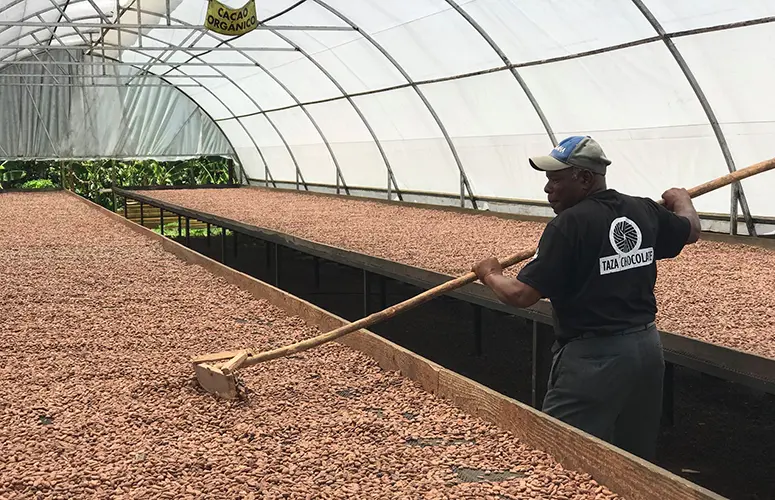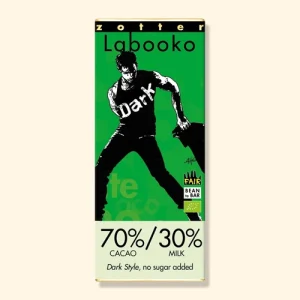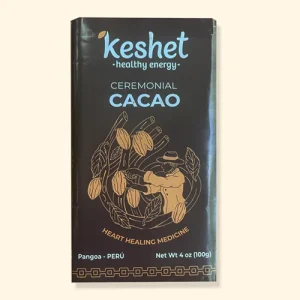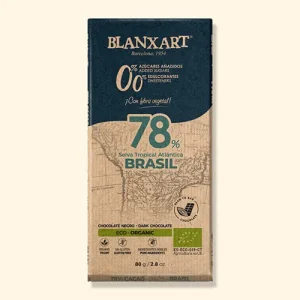Want to know what bean-to-bar chocolate is, how it is made and much more?
Read all about sustainable chocolate in our blogs.
Home " Direct Trade chocolate

Sharing:
Direct Trade chocolate, what does this really mean? In our case, Direct Trade refers to how a bean-to-bar chocolate maker sources its raw materials. A chocolate bar in the supermarket with an average price of €1.50. That probably doesn't sound strange to you, right? But that low price sells the cocoa farmer short, as well as the skills needed to make good chocolate. To better understand why bean-to-bar chocolate makers apply the Direct Trade model, we have to go back in history.
Chocolate not only has a sad past, but unfortunately also a sad present, marked by human rights violations, poverty and slavery.
Within 100 years of the 'invention' of cocoa by the Spanish, chocolate became a very popular drink at the royal houses of Europe. As demand for cocoa grew, cocoa production soon became intertwined with the slave trade. As demand for cocoa continued to grow, production moved to Venezuela and Ecuador.
Europeans' fondness for chocolate only continues to grow. In the early 19th century, industrialisation made it possible to produce chocolate on a large scale.
Today, about 70% of all the world's cocoa comes from Africa, with Ghana and Côte d'Ivoire the largest producers. Unfortunately, human rights violations remain commonplace here. Major chocolate brands have developed programmes to support farmers and reduce child labour. Yet in recent years, child labour has increased rather than decreased.
Therefore, the problem is complex and cannot be solved overnight. The fact is that many African cocoa farmers live in extreme poverty. Many children have no choice but to work on farms with their families. What is even more worrying is that the demand for chocolate is growing and the price of cocoa beans is rising, while farmers are paid less and less.

Among bean-to-bar chocolate makers, small chocolate makers who focus on making high-quality choclade, the Direct Trade model has become increasingly common in recent years. Chocolate makers buy cocoa directly from farmers or cooperatives. This relationship ensures that cocoa farmers get a fair price for their produce. It also allows chocolate makers to work closely with farmers to improve quality and taste. If you want to know how these small chocolate makers make their chocolate, read our blog 'This is how chocolate is made'.
The journey of Direct Trade cocoa beans varies and depends on the origin of the cocoa beans and the type of cocoa farmer. Some cocoa farmers communicate directly with chocolate makers and use exporters for distribution. In other cases, smaller cocoa farmers are part of larger cooperatives. This distribution chain is considerably shorter than that in the regular trade market, which means cocoa farmers receive a larger share of the yield from their crop. This enables them to invest in better working conditions and process improvements. The distribution chain below provides a general view of the journey from the cocoa producing country to the final chocolate maker who makes Direct Trade chocolate:



Direct Trade eliminates middlemen, allowing chocolate makers to pay significantly more for cocoa beans. In some cases, chocolate makers pay five times the fair trade price for fine-flavour cocoa beans. The direct relationship with the cocoa farmer allows the chocolate maker to provide feedback on quality and suggestions for improvements in the fermentation or drying process. Farmers also have a strong motivation to ensure that cocoa beans receive the best possible treatment from the time of harvesting to deliver high quality.
Perhaps the biggest advantage of Direct Trade is traceability. Chocolate made with Direct Trade beans can be easily traced back to the cocoa farmers, something that is not possible with bulk cocoa beans on the regular trade market.
In a world where chocolate embodies both pleasure and responsibility, the Direct Trade model offers a bright spot for change. By encouraging direct relationships between bean-to-bar chocolate makers and cocoa farmers, this model not only bestows fair compensation on farmers, but also opportunities for improvement and growth in their immediate environment.
With every bite you eat of this kind of chocolate, you not only taste the carefully selected ingredients, but also contribute to a more sustainable and ethical future for cocoa communities.





Want to know what bean-to-bar chocolate is, how it is made and much more?
Read all about sustainable chocolate in our blogs.